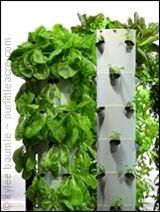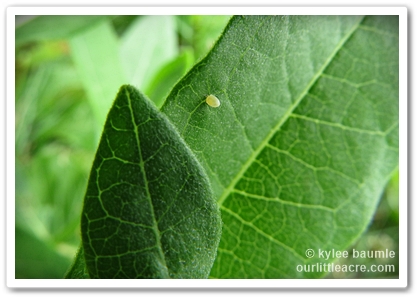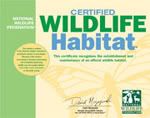 |
| I found this fifth instar caterpillar yesterday and it's now in my kitchen, nearly ready to pupate. |
It all started this morning when I walked out to my back garden, where all my milkweed grows, with the intention of finding more monarch caterpillars to bring in. These precious insects are vulnerable to prey and I know they stand a much better chance of living to adulthood in the safety of my kitchen than they do in my garden.
That was brought home to me in the first minute I arrived at the milkweed patch. Not one, but two monarch caterpillars had met a deadly fate.
It could have been a wasp, ants, bacteria, or any number of dangers that felled these two, and such is life, but I wanted to help any others if I could.
I found evidence of a larger caterpillar when I spotted its green frass lying on a leaf, but I didn't find the caterpillar.
 |
| A monarch's poop is called frass. |
 |
| I think all milkweed blossoms are beautiful, but the color of the swamp milkweed's is just luscious! |
So I moved to the common milkweed. Nothing there either! Plenty of milkweed beetles and milkweed bugs, but no sign of monarchs.
 |
| Plenty of milkweed bugs (Oncopeltus fasciatus) to be found. I wonder what the morning meeting was all about? |
It was then that I noticed some very small common milkweed plants coming up in the neighbor's yard, which of course had to have grown since the last time he mowed, less than a week ago. No plant was more than eight inches tall, and it's a testament to how quickly milkweed can shoot up.
 |
| Ten little milkweeds, growing in the yard... |
I decided to look closer at those little plants, knowing that monarchs prefer the young, tender plants for laying eggs.
I. Hit. The. Jackpot.
 |
| I also found a milkweed tussock moth caterpillar. |
In all, I found fourteen eggs. I've collected caterpillars and chrysalides on many occasions over the years and brought them into the house for safekeeping and observation. I know what to do with those. But I'd not collected eggs before, so I had to look up what to do.
I took a glass casserole dish and lined it with a wet paper towel, then laid the leaves on top of that. I covered the dish with a piece of Saran Wrap and poked holes in it for air. I'll need to keep the paper towel moistened and watch for hatching, which usually occurs within 2-3 days after the eggs have been laid.
 |
| Fourteen monarch eggs await hatching. |
Two of the eggs, probably laid at the same time because of their appearance and location on the same leaf, are very close to hatching. I can tell, because I can see the black heads of the larvae shining through at the top of the eggs.
 |
| How big are they? The average monarch egg is 1.2mm tall, about the size of a pinhead. |
Not only did I find eggs, I also found two newly-hatched caterpillars on a very young plant. It's amazing I even saw them, as they're a mere 2mm in length. That's about the same length as two grains of salt laid side-by-side. Yes, they're that tiny.
I've now got my monarch hatchery set up on the kitchen counter and once again, will be watching the miraculous process that is the life of a monarch butterfly. It simply never gets old to me.
If you want to read about my past experiences, click here, which will sort out all my posts on monarchs.

























 "Bejeweled"
"Bejeweled"



7 comments:
Thank goodness you found them! How fun to watch them grow on your kitchen counter! I agree, that never gets old! Good times.
You are having too much fun girl. Such excitement watching the life cycle of the monarch. One flitted through my garden yesterday. I couldn't get a photo. It seemed to be late for a date and was journeying on.
I do the same thing! One year I hatched out around 50 monarchs and overwintered around 95 swallowtails (I set this up in an old aquarium on my back porch) Once I started doing this, I can't stop. So glad you were able to do a monarch rescue. Have you ever participated in the Monarch Watch program? That's fun as well.
Brenda
I can't wait to see more photos! Each spring and fall I usually have black and yellow swallowtail butterflies that I take care of. I've lost most to birds or other predatory bugs this year so I think I'm going to start putting the eggs I find in containers again. I just love when they get so fat on rue and dill that their legs get chubby.
I read this with awe! I've never grown caterpillars inside, so I'm going to have to remedy this. Excited!
How wonderful to have so many caterpillars but sad they are killed. I love the idea that my recent visitors might have used the new plants popping up so I will be looking carefully.
Hi Kylee. I am reading all your monarch posts this AM.
I am looking for new ideas for housing monarchs indoors.
One idea I have used successfully to keep cut milkweed alive indoors are floral tubes, filled with water. Perhaps you have some around the house. I have also used clean produce containers for houses, poked with holes in the lid. This requires the milkweed to be prostrate in the container, so I prop up the front end of the tube with half a cork, sliced lengthwise to keep the stem in the most water.
One year when I raised over 600 monarchs, (that was a good year!), my lower level of the house was covered with produce containers!! The cat loved watching the action.
I also use a piece of paper towel in the bottom of the produce container to absorb frass juice, and I " change the diaper" every hour or so, depending on the number of monarchs in the container.
That process works well, yet I like your photos of other housing...a fish tank??? D.
Post a Comment